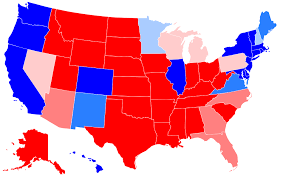Introduction
Swing states, also known as battleground states, are critical in the electoral process of any democratic nation, particularly in the United States. Unlike solidly Democratic or Republican states, swing states can be won by either major party in an election, making them pivotal in determining the overall outcome. Their relevance has amplified in recent elections, as demographic shifts and changing political sentiments have made predicting outcomes more challenging.
Key Swing States in Recent Elections
In the 2020 US Presidential election, notable swing states included Pennsylvania, Wisconsin, and Michigan. Joe Biden’s victories in these states were essential in securing his presidency, as they had leaned towards Donald Trump in the 2016 election. Similarly, states like Arizona and Georgia surfaced as new battlegrounds, reflecting shifting voter demographics and attitudes, particularly in relation to suburban voters and minority communities.
The Impact of Swing States on Political Campaigns
The significance of swing states lies not just in their unpredictable nature but also in how they influence campaign strategies. Candidates often focus resources, time, and tailored messages in these regions, understanding that winning them can be more critical than sweeping larger, less competitive states. For instance, during the last election cycle, both parties executed vast ground campaigns, targeted advertisements, and tailored outreach programs in swing states, showcasing their importance.
Factors Influencing Swing State Dynamics
Several factors contribute to the status of a state as a swing state. These include economic conditions, demographic changes, and social issues that resonate with voters. The ongoing discussions around healthcare, education, and unemployment rates also shape voters’ preferences. Moreover, shifts in voting rights and legislation have a demographic impact, influencing how populations engage in the electoral process.
Conclusion
As American society continues to evolve, so too will the landscape of swing states. Understanding these critical regions is essential for policymakers, political analysts, and voters alike. With changing demographics and political sentiments, the battlegrounds in elections may shift, emphasizing the need for continuous analysis. For future elections, swing states will remain a focal point, making them essential for both party strategies and the broader narrative of democracy.


